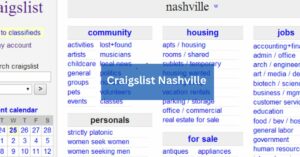8 Expert Tips for Testing Salesforce Like a Pro

Salesforce is an incredibly powerful platform, but that power comes with complexity. Between custom objects, Apex code, Lightning components, and third-party integrations, testing Salesforce can feel overwhelming, especially when your team is working in sprints or delivering frequent updates.
Whether you’re a developer, admin, QA engineer, or team lead, having the right testing strategy in place can make the difference between smooth deployments and surprise bugs in production.
Here are 8 expert tips to help you build a smarter, more scalable approach to Salesforce testing.
1. Start with Process Mapping
Before you jump into test cases, take time to map out your most critical business processes. From lead-to-opportunity to case resolution or approval flows, understanding how users interact with Salesforce helps you identify what actually needs to be tested.
Tip: Prioritise processes that span multiple teams or have a high impact on customer experience.
2. Don’t Rely Solely on Apex Test Coverage
Salesforce requires minimum test coverage for deployments. But that doesn’t mean your org is risk-free. Apex unit tests are essential, but they only test code in isolation. They don’t catch issues with flows, UI changes, integrations, or business logic conflicts.
Supplement your Apex tests with end-to-end validations that reflect how real users interact with the system.
3. Automate Early (and Intelligently)
Manual testing might work when you’re just getting started, but it doesn’t scale. As your org grows and evolves, so should your testing.
Invest in a framework for automated testing Salesforce processes. Begin with high-risk workflows and gradually build out your coverage. The earlier you automate, the less technical debt you’ll face down the line.
4. Test Across Profiles and Permissions
Salesforce is role-based at its core. A process that works for an admin may behave very differently for a standard user, partner, or community guest. Failing to test across profiles can lead to hidden issues like missing buttons, failed automations, or data access errors.
Always validate your flows and screens from the perspective of multiple user roles.
5. Don’t Skip Testing Declarative Changes
One of the strengths of Salesforce is its low-code configurability. But that doesn’t mean flows, validation rules, and page layouts are immune to bugs.
Changes made via Setup (rather than code) should still be tested thoroughly. Treat declarative customisations as part of your release scope, especially in orgs where admins make frequent updates.
6. Use AI to Stabilise and Scale
As your org becomes more complex, tests become harder to maintain. This is where AI testing tools come in. These tools use machine learning to detect UI changes, repair test scripts, and prioritise risk areas based on how your system behaves.
They help reduce test flakiness, cut down on manual effort, and let your QA team focus on strategy instead of script maintenance.
7. Test in Sandboxes That Mirror Production
Your testing is only as good as the environment it runs in. If your sandbox is outdated or doesn’t reflect your production data and configuration, test results may be misleading.
Use full-copy or partial sandboxes where possible, and refresh regularly to keep test environments accurate and meaningful.
8. Integrate Testing into CI/CD Pipelines
If you’re using DevOps or Salesforce DX, testing should be baked into your pipeline. Automate your test runs during deployments to catch issues early and ensure every change is validated before reaching users.
This approach saves time, improves code quality, and builds trust in your release process, especially when testing becomes part of your team’s daily workflow.
Salesforce testing doesn’t have to be a roadblock. With the right strategy, and mindset, along with a smart automated testing tool, you can reduce risk, increase release velocity, and improve user confidence in your platform.
Start small, scale smart, and don’t underestimate the value of AI and automation in your QA journey.







